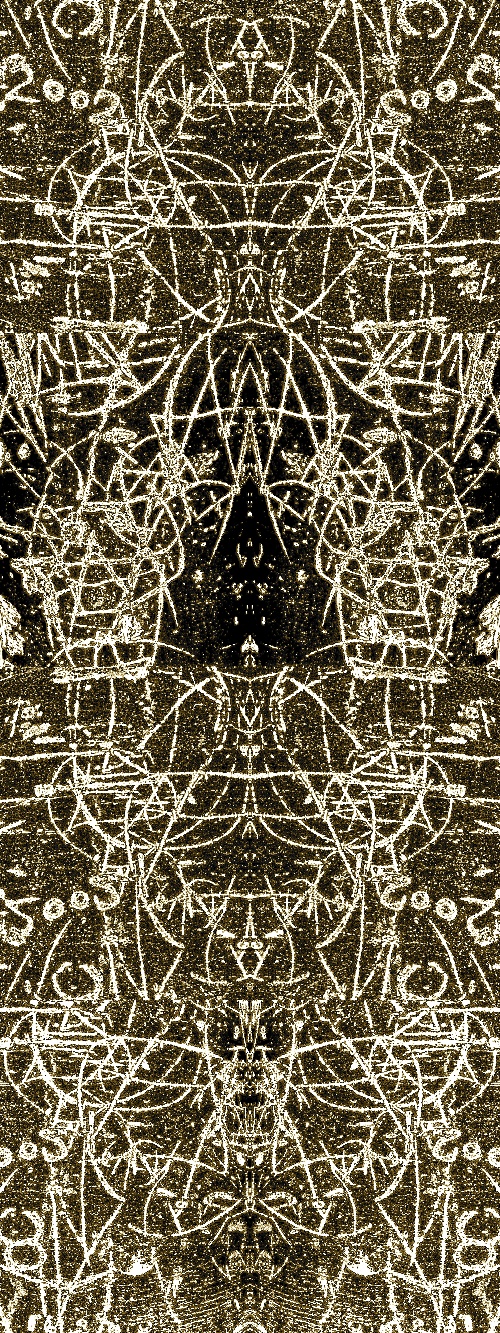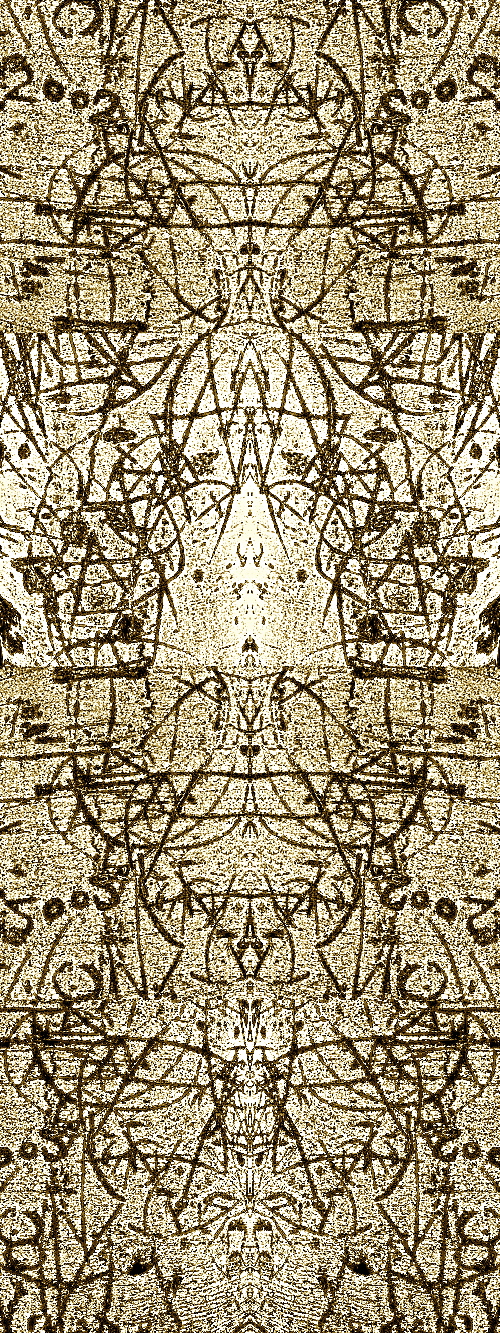In The Flesh Of Trees
new work by Claude Smith
early life: I have had a lifelong relationship with writing, drawing, and writing as drawing. My father, Sid Smith, was a classically trained painter and calligrapher (decades before the computer age). There were stacks of art books and calligraphy books in our New York apartment, and as a child, I would trace the different letter forms that I found in the books, sometimes creating my own variations. With my father's guidance, i was able to identify many typefaces by name and salient characteristics before i started elementary school.
After earning a B.F.A. from Pratt Institute, mark-making and writing-drawing began appearing as regular features in my work. Discovering the art of Antoni Tapies and Cy Twombly was both revelatory and inspiring, but a little disappointing in that they had so thoroughly mined the territory of contemporary mark-making. That said, I was committed to finding my own voice and have persisted in exploring different media and concepts ever since.
graphology: In 2005 I began a 3 year course of study in graphology under the tutelage of Janice Klein and mentorship of Roger Rubin. Theirs was a Gestalt psychological approach to the art of graphology, sometimes referred to as handwriting analysis. During this time, I examined and analyzed 100's of handwriting samples, and came to realize that people, all people, are somewhat bent, damaged, or struggling with their own inner torments and demons. I came away from this course with a greater appreciation of the scars, visible and invisible, that we all carry, and realized, more than anything, the need for more compassion and understanding.
1000 tiny cuts: In 2011 I began documenting bits of graffiti carved into trees I'd find while walking the streets of downtown Los Angeles. To date, I've taken about 3000 photos of tree-scrawl, incised by innumerable carvers over several decades. As a student of graphology, I was interested in what the marks could tell me about the writers. As an artist, I was interested in the historic lineage of this kind of mark-making throughout the world, but more than that, the aesthetic and social implications of these expressions of our contemporary culture and consciousness. Man's relationship with nature is but one of those considerations.
In the Flesh of Trees: This body of work includes new pieces from late 2015. My art-making process has evolved from documentation to transformation. The graphological DNA from the original tree-writing is still embedded in the latest work which resemble totems, and mandala-like configurations but is firmly rooted in urban, multi-cultural and contemporary culture. In short, I am seeing and reorganizing the pain and beauty of our society, as it has been knifed into the flesh of trees.
Claude Smith, 2015

































